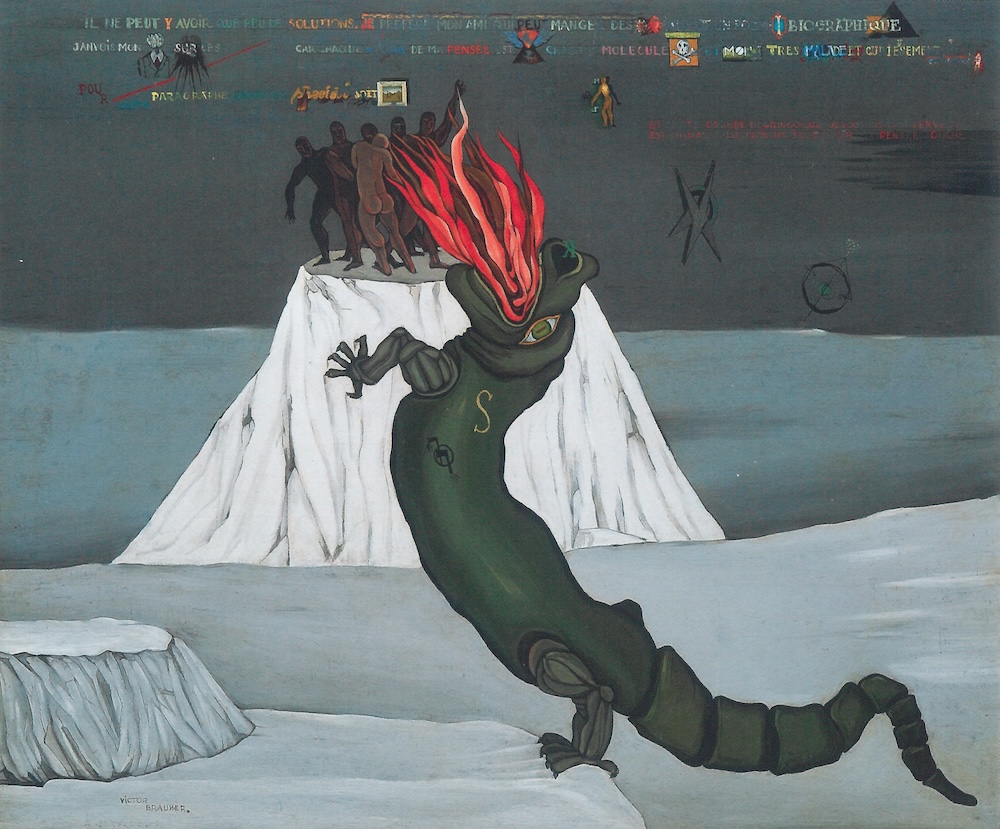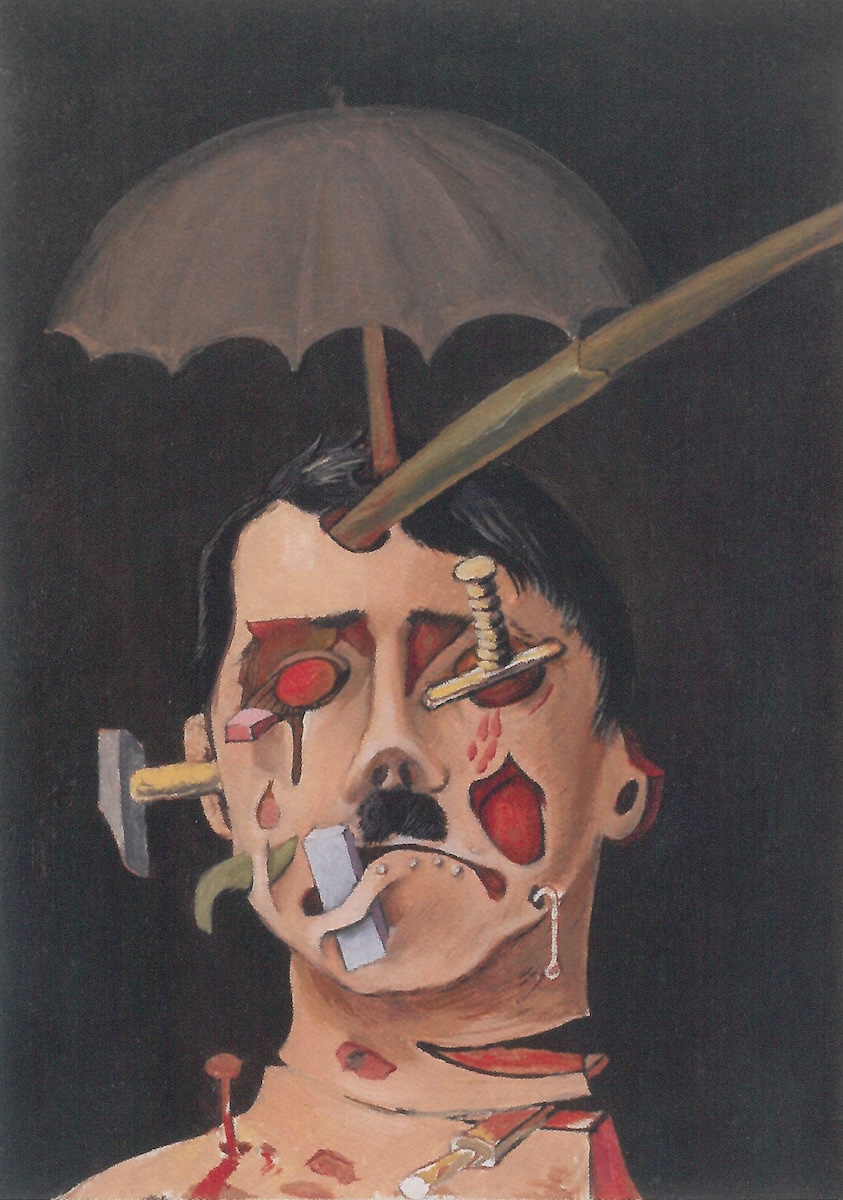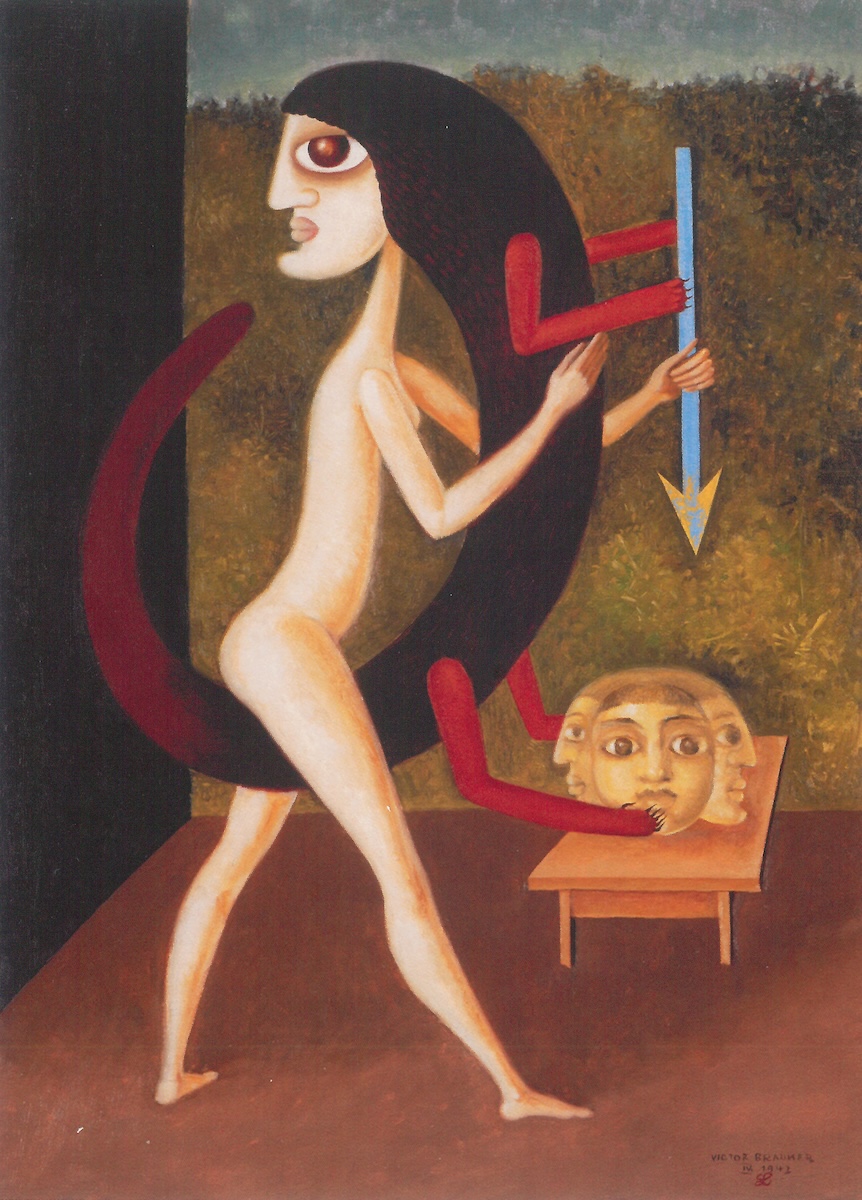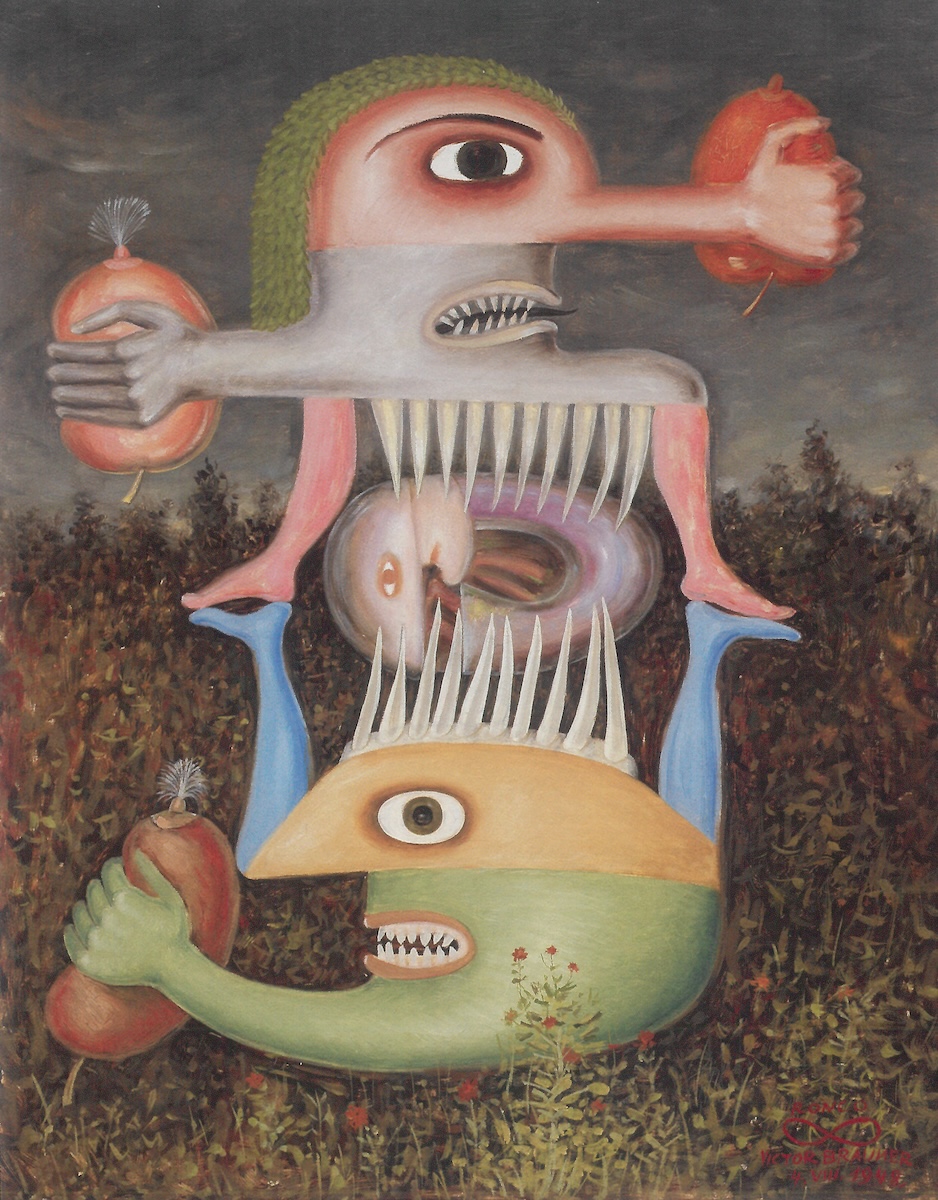

Victor Brauner’s Departures and Returns
Presentation by Irina Cărăbaș, Bucharest (Romania)
followed by a conversation with Nicola Baird, PhD, London (UK)
June 11, 2025 @ 12:00 pm - 1:00 pm
| FreeThis presentation by Irina Cărăbaș from the National University of Arts in Bucharest focusses on several key artistic and political contexts relevant to Brauner’s work and biography, as well as his reception in Romania. It is followed by a conversation with Nicola Baird, PhD. Introductory remarks by Sorina Neagu, Director of DOR – Romanian Diaspora.
Image above: Victor Brauner, Composition, not dated, oil on canvas, 53,5 x 64,5 cm, National Museum of Arts of Romania, Bucharest (INV. 73973/8502) © 2025 Artists Rights Society (ARS), New York / ADAGP, Paris
Born in Piatra Neamț, Romania into a Jewish family, Victor Brauner (1903-1966) took part in shaping several avant-garde groups in Bucharest since his early twenties. By the mid-1930s, he oscillated between Bucharest and Paris, where he nurtured and solidified his commitment to surrealism. During this time, Brauner also began exploring the representation of the human body—an investigation that he would develop in highly diverse directions throughout his life, always maintaining a connection with surrealist concepts. He later left Romania due to the rise of antisemitism never to return. His forced hiding in France during World War II became a period of experimentation with new materials and a deep dive into esotericism. The end of the war brought both personal uncertainties and new opportunities—encounters, exhibitions, and growing recognition of his work.

Victor Brauner, Self-portrait, 1931, oil on wood, 22 x 16,2 cm, Centre Pompidou MNAM-CCI, Paris (INV. AM1987-1196) Jacqueline Victor Brauner bequest 1986 © 2025 Artists Rights Society (ARS), New York / ADAGP, Paris

Victor Brauner, Hitler, 1934, oil on canvas, 22 x 16 cm, Centre Pompidou MNAM-CCI, Paris (INV. 2003-259) © 2025 Artists Rights Society (ARS), New York / ADAGP, Paris
In 2023, as part of the Timișoara – European Capital of Culture program, Romania hosted for the first time a monographic exhibition dedicated to the surrealist artist Victor Brauner (1903-1966). The exhibition brought together works from several European collections, helped to circulate the artist’s name beyond specialist circles, and invited reflection on traumatic episodes in local and European history. The exhibition catalog (Victor Brauner: Inventions and Magic, edited by Camille Morando, Timișoara, Arta Grafică, 2023), the most recent publication dedicated to the artist, addressed sensitive points in the local reception of his work and placed his artistic practice in connection with experiences of emigration, exile, and an “in-betweenness” that shaped Brauner’s career.
This event is part of the online series “Flight or Fight. stories of artists under repression.” In collaboration with DOR – Romanian Diaspora and #CarteadeVineri (CDV).

Victor Brauner, Stable-Unstable, Plain of Theus, 1942, oil on canvas, 73 x 54 cm, Centre Pompidou MNAM-CCI, Paris (INV. AM3091 P). Purchase from Victor Brauner by the French State in 1951, allocation to the MNAM in 1951 © 2025 Artists Rights Society (ARS), New York / ADAGP, Paris

Victor Brauner, The Totem of Wounded Subjectivity II, 1948, oil on canvas, 91,5×72,7 cm, Centre Pompidou MNAM-CCI, Paris (INV. AM1987-1205) Jacqueline Victor Brauner bequest in 1986 © 2025 Artists Rights Society (ARS), New York / ADAGP, Paris
Irina Cărăbaș is assistant professor at the Department of Art History and Theory, National University of Arts in Bucharest. Her interests are the historical avant-garde, Socialist Realism, transnational relations in the Eastern Bloc, and the survival of Modernism in the postwar era. She is the author of the book Realismul socialist cu fața spre trecut. Instituții și artiști în România 1944-1953 (Socialist Realism facing the past. Institutions and artists in Romania 1944-1953, Cluj-Napoca, Idea Design&Print, 2017) and also co-editor of several collective volumes.
Dr Nicola Baird is an independent art historian and curator affiliated with the Centre for the Study of the Networked Image at London South Bank University. She specializes in twentieth century and contemporary British and European art and cultural history and is also passionate about European émigré histories and cultures. Previous exhibitions have included Fred Uhlman (Burgh House and Hatton Gallery, 2018), Czech Routes to Britain (Ben Uri Gallery, 2019), Becoming Gustav Metzger (Ben Uri Gallery, 2021), Knots: Jonny Briggs x Burgh House- Contemporary Interventions into an Historic House (Burgh House, 2021-2022) and ‘The line is an unreal thing’: Dorothy Mead and Edna Mann (LSBU, 2024). She is Section Editor for Open Cultural Studies and Editorial Assisant at The International Yearbook of Futurism Studies, both published by De Gruyter.


